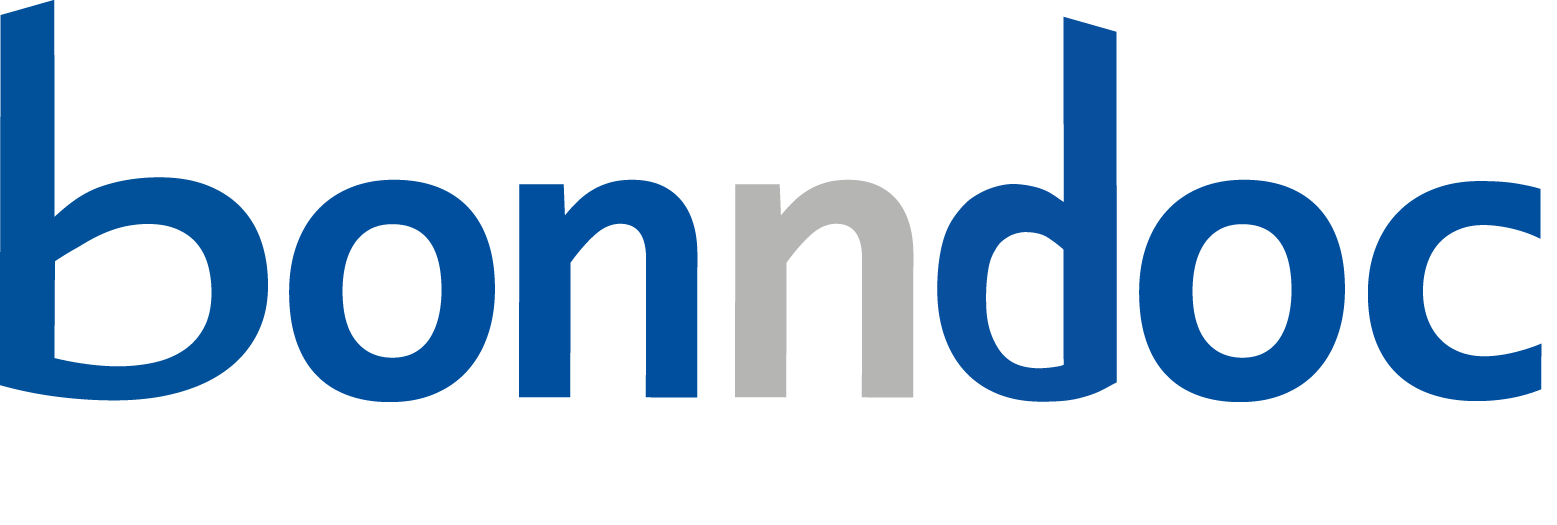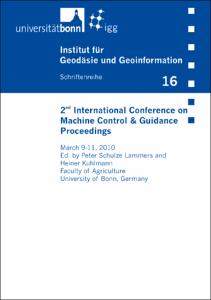Lammers, Peter Schulze; Kuhlmann, Heiner (Hrsg.): 2nd International Conference on Machine Control & Guidance Proceedings : proceedings ; March 9 - 11, 2010. Bonn: Rheinische Friedrich-Wilhelms-Universität Bonn, Landwirtschaftliche Fakultät, IGG - Institut für Geodäsie und Geoinformation, 2010. In: Lammers, Peter Schulze; Kuhlmann, Heiner (Hrsg.): Schriftenreihe / Institut für Geodäsie und Geoinformation, 16.
Online-Ausgabe in bonndoc: https://hdl.handle.net/20.500.11811/1399
Online-Ausgabe in bonndoc: https://hdl.handle.net/20.500.11811/1399
@proceedings{handle:20.500.11811/1399,
editor = {{Peter Schulze Lammers} and {Heiner Kuhlmann}},
title = {2nd International Conference on Machine Control & Guidance Proceedings : proceedings ; March 9 - 11, 2010},
publisher = {Rheinische Friedrich-Wilhelms-Universität Bonn, Landwirtschaftliche Fakultät, IGG - Institut für Geodäsie und Geoinformation},
year = 2010,
series = {Schriftenreihe / Institut für Geodäsie und Geoinformation},
volume = 16,
note = {As technology advances and the number of construction applications requiring high-precision position attributes increases, contractors increasingly require spatial data services with higher accuracy and availability. Moreover, spiralling machine fuel, labour and material costs are increasing the focus towards productivity tools and construction accuracy. Positioning equipment manufacturers have responded by developing advanced machine control systems capable of using positional information from a variety of sources, including conventional terrestrial total-stations, single- and dual-grade lasers, and increasingly real-time GNSS positioning.
Increasing numbers of construction projects thus depend on continually-available positioning signals, and the latest development in ubiquitous, network RTK – whereby the temporal and spatial errors affecting GNSS signals over a specific region, are estimated through sophisticated algorithms in order to generate real-time error corrections unique to the network area. These RTK-GNSS networks are thus able provide high-quality, high-accuracy and high-reliability coordinates and corrections via various communication channels and protocols, for use across entire metropolitan regions, and construction project areas.
As a result, networks of RTK stations have caught the attention of contractors and consultants for their scalability, flexibility, stability and reliability whilst supporting spatial services. Those corporations responsible for these operation and management of large construction and engineering projects, are becoming aware of the competitive and fiscal advantages that RTK networks can bring as the most important infrastructure component in their projects. Thanks to the establishment of a GNSS reference station network, with their inherent high accuracy services and corrections based on a consistent geodetic coordinate datum, the fundamental coordinate control infrastructure for any construction project is already in place.
Not only do surveying, GIS and mapping activities benefit from this fundamental infrastructure in terms of faster data acquisition and position updates, but also many other real-time applications, such as telematics, fleet management, and production control. The clear fact that all of these activities can be performed in a more efficient manner is an emerging force-multiplier in terms of market acceptance.
Leica Geosystems, a pioneer in both network RTK positioning and machine control systems, has recognised the clear benefits that positioning infrastructure brings to improving the operational performance as well as the usability of reference networks to provide the competitive advantage for 3D machine control applications. This paper outlines these advantages as well as the fiscal benefits that can result from taking full advantage of the power of RTK networks.},
url = {https://hdl.handle.net/20.500.11811/1399}
}
editor = {{Peter Schulze Lammers} and {Heiner Kuhlmann}},
title = {2nd International Conference on Machine Control & Guidance Proceedings : proceedings ; March 9 - 11, 2010},
publisher = {Rheinische Friedrich-Wilhelms-Universität Bonn, Landwirtschaftliche Fakultät, IGG - Institut für Geodäsie und Geoinformation},
year = 2010,
series = {Schriftenreihe / Institut für Geodäsie und Geoinformation},
volume = 16,
note = {As technology advances and the number of construction applications requiring high-precision position attributes increases, contractors increasingly require spatial data services with higher accuracy and availability. Moreover, spiralling machine fuel, labour and material costs are increasing the focus towards productivity tools and construction accuracy. Positioning equipment manufacturers have responded by developing advanced machine control systems capable of using positional information from a variety of sources, including conventional terrestrial total-stations, single- and dual-grade lasers, and increasingly real-time GNSS positioning.
Increasing numbers of construction projects thus depend on continually-available positioning signals, and the latest development in ubiquitous, network RTK – whereby the temporal and spatial errors affecting GNSS signals over a specific region, are estimated through sophisticated algorithms in order to generate real-time error corrections unique to the network area. These RTK-GNSS networks are thus able provide high-quality, high-accuracy and high-reliability coordinates and corrections via various communication channels and protocols, for use across entire metropolitan regions, and construction project areas.
As a result, networks of RTK stations have caught the attention of contractors and consultants for their scalability, flexibility, stability and reliability whilst supporting spatial services. Those corporations responsible for these operation and management of large construction and engineering projects, are becoming aware of the competitive and fiscal advantages that RTK networks can bring as the most important infrastructure component in their projects. Thanks to the establishment of a GNSS reference station network, with their inherent high accuracy services and corrections based on a consistent geodetic coordinate datum, the fundamental coordinate control infrastructure for any construction project is already in place.
Not only do surveying, GIS and mapping activities benefit from this fundamental infrastructure in terms of faster data acquisition and position updates, but also many other real-time applications, such as telematics, fleet management, and production control. The clear fact that all of these activities can be performed in a more efficient manner is an emerging force-multiplier in terms of market acceptance.
Leica Geosystems, a pioneer in both network RTK positioning and machine control systems, has recognised the clear benefits that positioning infrastructure brings to improving the operational performance as well as the usability of reference networks to provide the competitive advantage for 3D machine control applications. This paper outlines these advantages as well as the fiscal benefits that can result from taking full advantage of the power of RTK networks.},
url = {https://hdl.handle.net/20.500.11811/1399}
}






